 by our College Data Analytics Team
by our College Data Analytics TeamUT Health total enrollment is approximately 89 students.
See racial/ethnic breakdown for all students.
Male/Female Breakdown of Graduate Students
About 77% of full-time grad students are women, and 23% men.
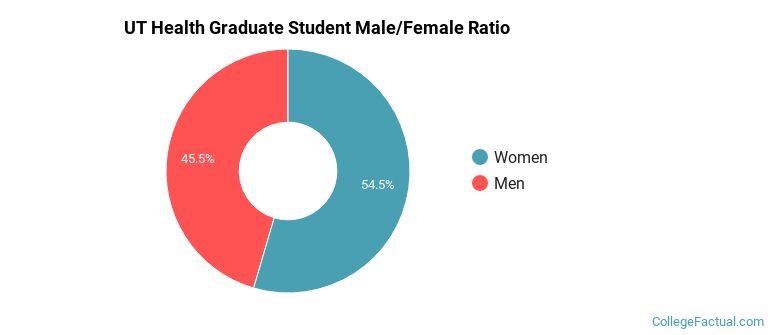
For the gender breakdown for all students, go here.
UT Health Racial-Ethnic Breakdown of Graduate Students
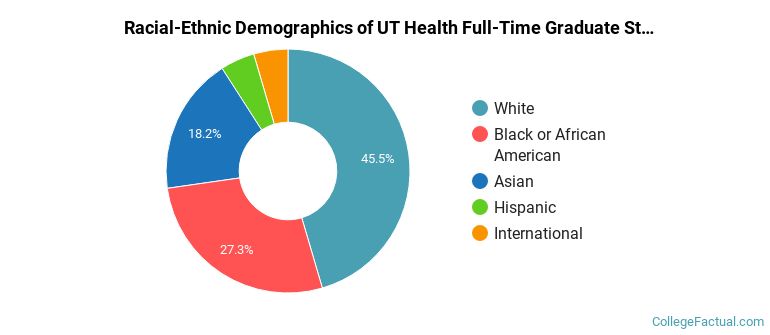
| Race/Ethnicity | Number |
|---|---|
| Black or African American | 13 |
| White | 11 |
| Asian | 7 |
| Unknown | 3 |
| Hispanic | 1 |
| Native Hawaiian or Pacific Islander | 0 |
| International | 0 |
| Multi-Ethnic | 0 |
See racial/ethnic breakdown for all students.
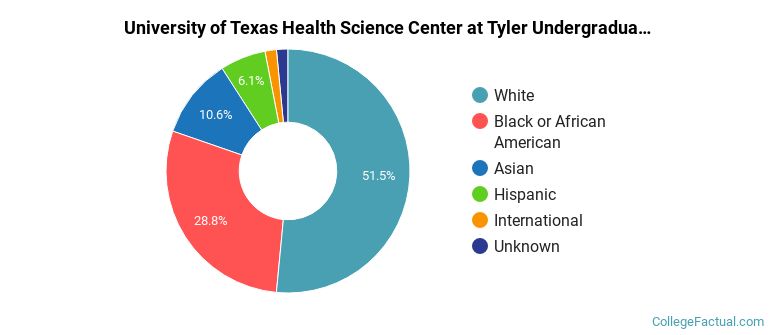
| Race/Ethnicity | Number |
|---|---|
| White | 34 |
| Black or African American | 30 |
| Asian | 12 |
| Hispanic | 6 |
| Unknown | 5 |
| Native Hawaiian or Pacific Islander | 1 |
| International | 0 |
| Multi-Ethnic | 0 |
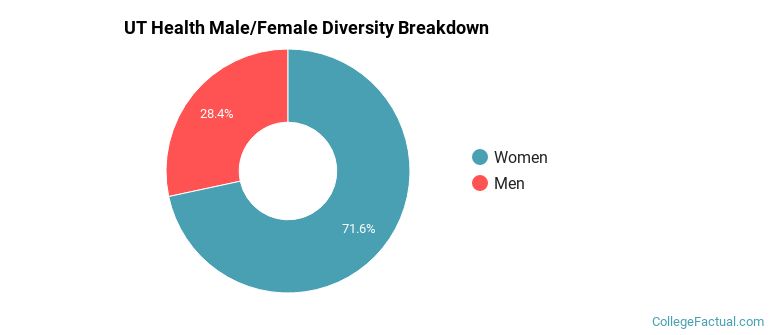
There are approximately 63 female students and 26 male students at UT Health.
A traditional college student is defined as being between the ages of 18-21. At UT Health, 2.86% of students fall into that category, compared to the national average of 60%.
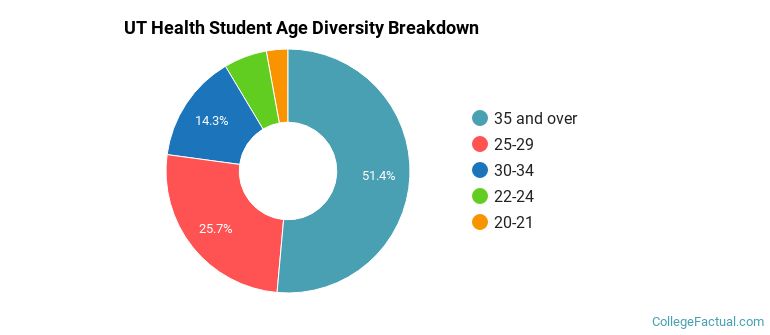
| Student Age Group | Amount |
|---|---|
| 35 and over | 18 |
| 25-29 | 9 |
| 30-34 | 5 |
| 22-24 | 2 |
| 20-21 | 1 |
| 18-19 | 0 |
| Under 18 | 0 |
Footnotes
*The racial-ethnic minorities count is calculated by taking the total number of students and subtracting white students, international students, and students whose race/ethnicity was unknown. This number is then divided by the total number of students at the school to obtain the racial-ethnic minorities percentage.
References